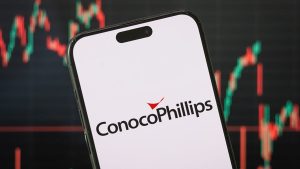My favourite thing about owning shares in a FTSE 100 dividend stock is the consistent returns, even in bad years for the stock market.
During a turbulent 2022, I was thrilled to still receive regular payments into my brokerage account from the shares I owned in these types of companies.
Among British companies, one of the highest dividend payers is Aviva (LSE: AV). The firm has paid out over £1bn to shareholders in some recent years.
I don’t have a position in the FTSE 100 insurance behemoth. But as 2023 looks like another rough year for the markets, I see a few reasons why this might be the FTSE 100’s greatest bargain.
A sizeable yield
Aviva’s annual yield currently stands at 7.63%. Over a year, I would expect that percentage on a £1,000 stake to give me £76.30 and a £10,000 stake to give me £763 and so on.
I’d be very happy with those kinds of payments, but they are so large that there might be the risk that future payouts will come down or be inconsistent.
The first step I can take to assess this risk is to look at past performance and future projections. Over the past five years, dividends as an annual percentage for Aviva have been 7.1%, 10.9%, 3%, 10.5%, and 7.1%.
Those are excellent figures and are mostly around today’s figure of 7.63%. Even the 3% came in 2020 due to the COVID pandemic, which should be a one-off and not a sign of future drops.
Towards the future
Looking ahead, Aviva’s projected dividend for the next year is an increase from 31p per share to 32.5p. The percentage will vary, but at today’s share price that would come in at 7.9%.
It’s great that past and future dividends both look strong, but I can further ensure that future dividends will remain that way if I look at how much the company spends on them.
As a rule of thumb, if more than 60% of a company’s earnings goes to shareholders it’s a bad sign. Spending this much on dividends can mean less cash for the company to spend to grow its business. And if the payments are too high, they may be unsustainable and come down in the future.
Aviva spent around 53% of its earnings on dividend payments in 2022. Based on that, I’d be confident that there aren’t any short-term threats to the dividend.
Am I buying?
Of course, I can’t simply analyse a company with a quick look at its dividend.
In Aviva’s case, I like that the company has global reach in countries like Ireland and Canada so it doesn’t rely too much on UK income. But I am concerned that insurance is a saturated market, which may prevent further growth.
Analysing these things is crucial to be sure that I buy into a good company. And if I do it right, I could even expect to see the shares I own be worth more, which would give me even more return on investment.
Overall, Aviva looks very strong to me. I believe its near-8% return and strong dividend history make it one of the best bargains the FTSE 100 offers right now. I will look to open a position in the near future.
This post was originally published on Motley Fool





